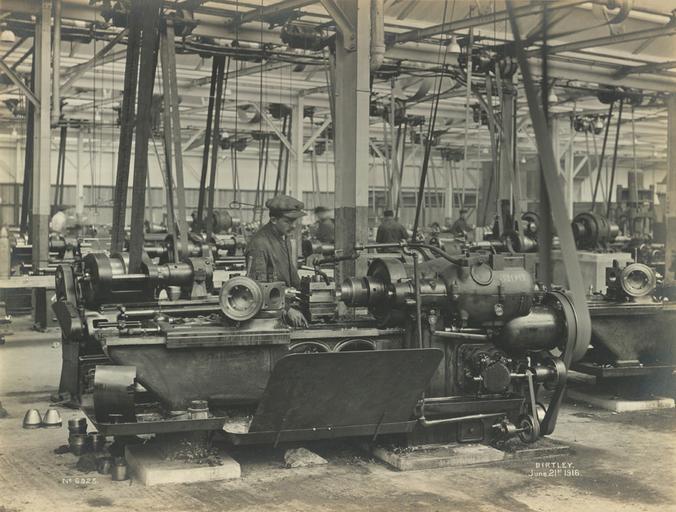MAKE A MEME
View Large Image

| View Original: | Machining_heads.jpg (1000x757) | |||
| Download: | Original | Medium | Small | Thumb |
| Courtesy of: | www.flickr.com | More Like This | ||
| Keywords: ww1 first world war firstworldwar national projectile factory nationalprojectilefactory birtley birtley belgians birtleybelgians social history socialhistory sir w.g. armstrong whitworth & co. ltd sirwgarmstrongwhitworthcoltd shell manufacture shellmanufacture elisabethville machinery gun shells gunshells outdoor Machining heads of the shells at the National Projectile Factory, Birtley, 21 June 1916 (TWAM ref. 1027/271). These images belong to an album of photographs taken in the National Projectile Factory, Birtley (near Gateshead) during the First World War. The photographs were taken by Sir W.G. Armstrong Whitworth & Co Ltd, who built the factory. The images date from June 1916, shortly after the factory became operational. What makes the factory (and these photographs of it) so special is that all the management and workers there were Belgian. The factory and the nearby village of Elisabethville (built to accommodate them) were like a little corner of Belgium transplanted to the North East of England. More information about the factory and the village of Elisabethville can be found in the blog, which accompanies this set. (Copyright) We're happy for you to share these digital images within the spirit of The Commons. Please cite 'Tyne & Wear Archives & Museums' when reusing. Certain restrictions on high quality reproductions and commercial use of the original physical version apply though; if you're unsure please email archives@twmuseums.org.uk Machining heads of the shells at the National Projectile Factory, Birtley, 21 June 1916 (TWAM ref. 1027/271). These images belong to an album of photographs taken in the National Projectile Factory, Birtley (near Gateshead) during the First World War. The photographs were taken by Sir W.G. Armstrong Whitworth & Co Ltd, who built the factory. The images date from June 1916, shortly after the factory became operational. What makes the factory (and these photographs of it) so special is that all the management and workers there were Belgian. The factory and the nearby village of Elisabethville (built to accommodate them) were like a little corner of Belgium transplanted to the North East of England. More information about the factory and the village of Elisabethville can be found in the blog, which accompanies this set. (Copyright) We're happy for you to share these digital images within the spirit of The Commons. Please cite 'Tyne & Wear Archives & Museums' when reusing. Certain restrictions on high quality reproductions and commercial use of the original physical version apply though; if you're unsure please email archives@twmuseums.org.uk | ||||